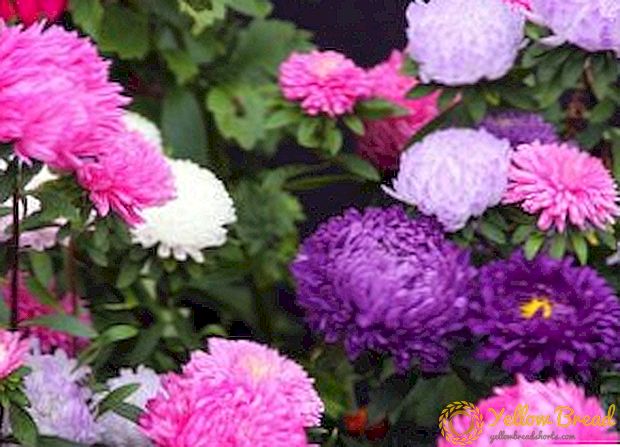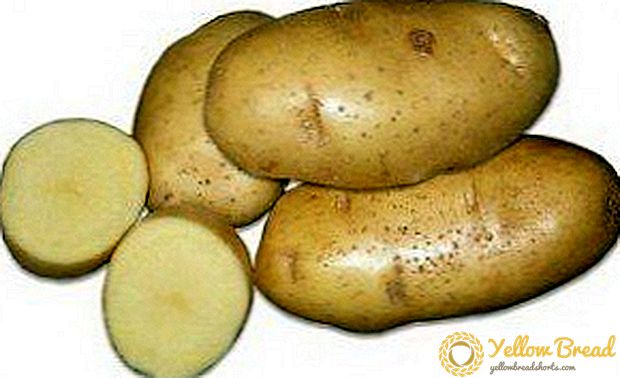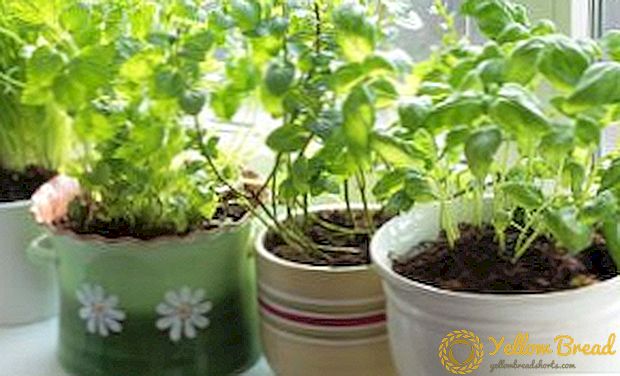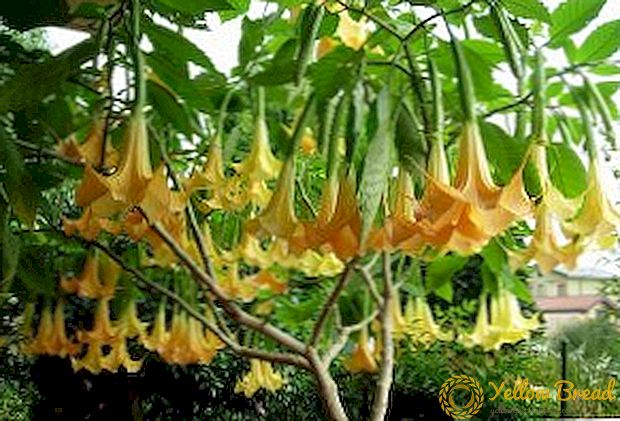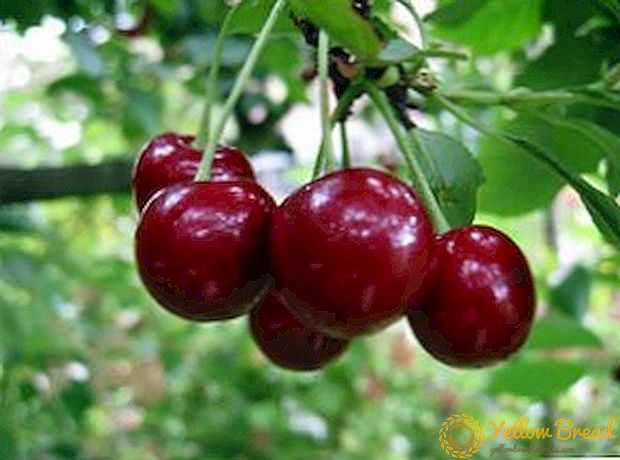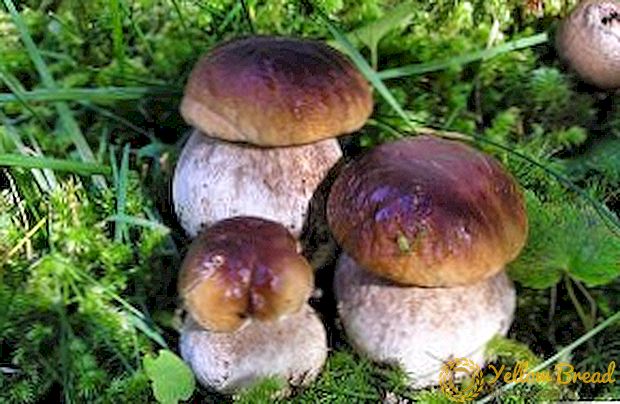 Borovik, which is even more often called white cep, is a mushroom from the family of boletes of the boletus genus. He is particularly fond of mushroom pickers because of their size, taste and smell. The presence of a multitude of names testifies to people's love and popularity: belevik, wood-grouse, babek, kovyl, reaping. Borovik has about 300 species, among which there are both edible and inedible, and even poisonous. We will introduce you to the 10 most common species of boletus mushroom, we give their description and photos that will give you an idea of how they look.
Borovik, which is even more often called white cep, is a mushroom from the family of boletes of the boletus genus. He is particularly fond of mushroom pickers because of their size, taste and smell. The presence of a multitude of names testifies to people's love and popularity: belevik, wood-grouse, babek, kovyl, reaping. Borovik has about 300 species, among which there are both edible and inedible, and even poisonous. We will introduce you to the 10 most common species of boletus mushroom, we give their description and photos that will give you an idea of how they look.
- Bronze
- Oak (netted)
- Maiden
- White
- Birch
- Burroughs
- Yellow
- Royal
- Porospore
- Vechtner
Bronze
This type of boletus (lat. Boletus aereus) can be found quite rarely in the forests of Western and Southern Europe. The area of its distribution is deciduous forests (oak, hornbeam, beech). In France, he is called the head of a black man (probably because of a chocolate-colored hat). In Ukraine, it is an oak mushroom or rude. There, this species is even listed in the Red Book. However, as in Norway, Montenegro, Denmark. If you're lucky, you can meet this rare species from the beginning of summer to October.
Leg 9-12 cm long at first looks like a barrel, later becomes cylindrical. Sometimes it takes the form of a mace. Its color is dark brown, but it is much lighter than the cap.
The flesh is white, when cut, the color does not change. It has a very good mushroom flavor and great taste. It is because of these characteristics that gourmets attribute it to very valuable specimens and rate it higher than the “king of mushrooms” - the white mushroom. It is dried, pickled, fried, boiled. 
Oak (netted)
Oak species (lat. Boletus reticulatus) are often called summer. It can be found in deciduous forests, mostly under birches, lindens, beeches, chestnuts, in areas of warm climatic zone. It appears early - the first copies can be found already in the late spring.The end of fruiting is in October.
We suggest finding out how this mushroom from the borovik genus looks from our short description. The size of the cap can meet from 8 to 25 cm. At first it grows in the shape of a ball, then it becomes convex. The peel on the cap is dotted with small cracks, which form a beautiful mesh pattern. The color of the cap surface is usually light brown. Sometimes it may not have bright spots. White tubules are located on the bottom of the cap. Later, they become yellowish-green or olive.
The leg grows from 10 to 25 cm. In young borovik it resembles a mace in shape, and in aging mushrooms it is similar to a cylinder. Her color is light brown. The entire length of it is shrouded in a grid of white. Occasionally found brown.
The flesh of the oak species is white. In the context of its color does not change. It has an attractive mushroom smell and slightly sweet taste. The aroma becomes more saturated in dried mushrooms.
Oak species are very similar to pine. The only visible difference between them is that the latter only covers the upper portion of the leg.
Used mushroom in fresh and pickled form. 
Maiden
Overview of the most common species of fungus mushroom we continue the description of the girl's species (lat. Boletus appendiculatus). It has a few more names: adnexal, ovary, brown-yellow, shortened. In nature, it can be found quite rarely. As a rule, the area of its distribution is limited to areas located in a warm climate zone, deciduous and mixed forests. Especially likes to grow under the oaks, hornbeams, beeches, fir. Fruits in early summer to early fall.
You can recognize him by the hat yellowish, brown or red-brown color. In young specimens, it is semi-circular, later - convex. In diameter it reaches from 7 to 20 cm.
The leg is cylindrical or in the form of a club from 6 to 12 cm in length and from 2 to 3 cm in thickness. In young borovik covered with mesh. Across the surface is yellow, below - red-brown.
The flesh is yellow. When cutting is painted in blue. The fruit body is aromatic and tasty.
According to external signs, the marsh mushroom looks like a semi-white. You can distinguish them by the fact that the latter has a light yellow-brown cap, the lower part of the leg has an almost black color, and the smell is specific, resembling carbolic acid. Also, this boletus looks like a semi-proprietary one with the only difference that the latter has white flesh. 
White
What a white mushroom looks like (lat. Boletus edulis) is probably known even to a teenager. It is a large and very tasty representative of the borovik genus, growing in forests of deciduous, coniferous and mixed types. Forms mycorrhiza with some trees. Appears in waves. Its fruiting can be divided into several stages. The most abundant fruits during the second stage - in mid-July. Fruiting ends in October. In cooking, it is used in all kinds of species.
The cap is attached to the massive and high leg. It grows up to 20 cm in length and up to 5 cm in width.
The leg is cylindrical in shape, it expands strongly towards the base. Its color is white or light beige. Mesh pattern covers its top. Usually most of the legs are hidden in the soil.
The flesh at breaking or cutting does not change color, and all the time remains white. It smells faintly and has an attractive taste with a nutty hint.
Other boletuses are not so rarely confused with the white species. For example, the common oak and the boletus yellow are very similar in appearance to it.
White fungus is credited with medicinal properties. In folk medicine, means based on it are used to heal frostbite, with angina, tuberculosis, as a prevention of the formation of cancer and to strengthen the immune system.

Birch
Borovik birch (lat. Boletus betulicola) got its name because it forms mycorhiza with birch trees. He often comes across mushroom pickers in Russia and Western Europe. It grows on edges and along roadsides. Can grow families and alone. Fruits from early summer to mid-autumn.
In young specimens, caps have a pillow shape. For adults, it is flat. Its dimensions can be from 5 to 15 cm in diameter. Its color is light: from white-ocher to yellowish. Maybe almost white. The top of the cap is smooth, sometimes wrinkled. The lower tubular part of it in young individuals is white, later, as it grows, it acquires a light yellow shade.
The leg may have a length of 5 to 12 cm. The shape resembles a keg - widened from the bottom, narrowed to the top. The color is white with a slightly brown tint. In the upper zone is covered with white mesh.
The flesh is white, after breaking it remains the same color. Fragrant, with a mild flavor. 
Burroughs
Burroughs Boletus (Lat.Boletus barrowsii) forms mycorrhiza with conifers and lives more in the forests of North America. Usually grows randomly, in small or large groups throughout the summer season.
It has a fleshy cap in sizes from 7 to 25 cm in diameter. In young specimens it is round, in old ones it is flat. Its color can be different - white, yellowish, gray. The lower tubular layer is white, slightly darkens as it gets older and acquires a yellowish or greenish tint.
Leg - quite high, grows in height by 10-25 cm, width by 2-4 cm. Whitish in color. The shape of the club-shaped. The entire length of the leg is decorated with a whitish mesh.
The pulp of Burrough’s cowberry is dense. It has a rich mushroom smell. It tastes sweetish. Its color even when cut or cracked remains white.
The nutritional value of this mushroom is somewhat lower compared to, for example, with a white appearance - it is ranked in the second category. It is subjected to drying, boiling, frying, pickling. Usually used for cooking soups, sauces, side dishes. 
Yellow
Yellow boletus (lat. Boletus junquilleus) grows in oak and beech forests in Western Europe and some regions of Russia.He fructifies from mid-summer to mid-autumn.
His hat is not as large as that of other members of the borovik genus - it grows from 4 to 16 cm. It is very rare to see specimens with a 20-centimeter cap. As with all borovik, over time, it changes its shape - first, it is convex, then gradually becomes flat. As the name implies, is colored yellow. The top of the cap is usually smooth, but can be wrinkled. The lower part, where the tubes are located, is also yellow. If you squeeze it, the tubes will turn blue.
Leg average length - 4-12 cm, tuberiform. Painted in yellow. Unlike most borovikov, it is not covered with a grid. Sometimes littered with scales or brown grain.
Pulp consistency dense. It has almost no smell. The color is yellow. When cutting changes color to blue.
Yellow boletus is ranked in the second category of mushrooms allowed for consumption. The main use found in fresh, pickled and dried.

Royal
Growing region of King Borovik (LatinBoletus regius) is limited to Russia. It grows in deciduous forests, mostly in beech, on calcareous and sandy soils. Fruits in early summer to early fall.
Mushroom is very attractive in appearance. It has a bright pink, pink or purple-red cap, which reaches a diameter of 6-15 cm. Its surface is smooth, occasionally dotted with cracks of white. In young mushrooms, it is convex, then smoothly passes into the cushion and flat. Old representatives of this species have a dent in the center of the cap. Tubes in the lower layer of a greenish or yellowish tint.
The leg grows up to 15 cm in height. The thickness can reach 6 cm. Painted in a yellowish-brown color. The upper part is covered with a yellow mesh.
The flesh of the king boletus is yellow. If you cut it, it turns blue. It has a good aroma and taste. The consistency is dense.
This view is valuable. In cooking, it is used fresh and canned. 
Porospore
Porospore borovik (lat. Boletus porosporus) is often also referred to as the genus Moth. His favorite habitat is deciduous and mixed forest. There they appear from the beginning of summer to the beginning of autumn.
His hat grows up to 8 cm in diameter. It looks similar to a pillow or a hemisphere. Its surface is speckled with white microcracks. Its color is dark or gray-brown. Below it is rich yellow. When squeezed the tubes turn blue.
Leg medium length, gray-brown. At the base has a particularly rich color.
The flesh of the porospore white. According to the structure, it is fleshy. Tasty, with a fruity aroma. In several sources, this mushroom is classified as conditionally edible.

Vechtner
The fechtner borovik (Boletus fechtneri) grows in Russia, the Far East and the Caucasus. It can be found in the forests of broad-leaved type from the beginning of summer to the beginning of autumn.
It has a hemispherical cap size from 5 to 15 cm in diameter. Its surface is silvery white. The bottom tubular layer is yellow. The skin is smooth, and on rainy days it becomes mucous.
Leg in this species is tuberiform. In height it reaches 4-16 cm, in width - 2-6 cm. Its surface is painted yellow, the base is brown. Most often covered with a mesh pattern, but it may not be.
The pulp of this boletus is rather fleshy and elastic. Virtually odorless. Painted white. When cracking becomes with a bluish tint.
By taste, this boletus belongs to the third category. It is consumed fresh, salted, pickled. 

